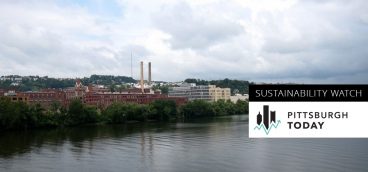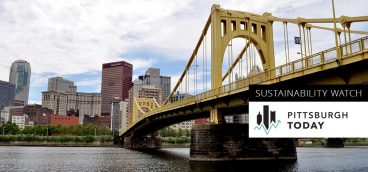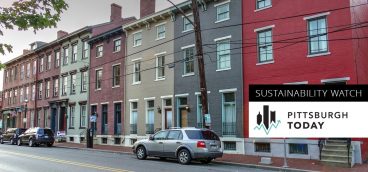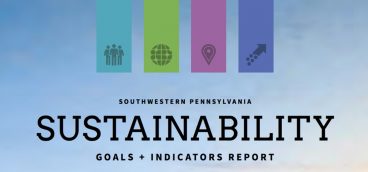
Air Quality Trends
The days when Pittsburgh earned the reputation as the “Smokey City” may be long gone, but the quality of the region’s air remains a concern. Air quality has improved across the region for more than two decades due to a number of factors, including the decline of local steel and other heavy manufacturing, tighter air …

Environmental Ethic
The environmental ethic among southwestern Pennsylvanians is complex, data reported in the Pittsburgh Regional Environmental survey suggest. They do not, for example, exclude citizens like themselves from sharing the burden of solving environmental problems. More than 86 percent of those who live in the Pittsburgh Metropolitan Statistical Area agree that individual citizens should be responsible …

Infant Mortality Trends
Infant mortality remains a serious public health issue in the region, nation and around the world. Local data, however, is encouraging. Rates of infant deaths have decreased since 2003 in Allegheny County, where infant mortality has historically been high, particularly among African Americans. Racial differences African American infant mortality rates have declined more sharply than …

Combined Sewage Overflow
Abundant annual rainfall leaves southwestern Pennsylvania in a fortunate position as much of the world grapples with the prospect of a shortage of fresh water. But effective stewardship to protect the quality of its rivers and streams has not been the region’s strong suit. The region’s most pressing water problem is in Allegheny County, where …

Regional Poverty
Poverty remains a stubborn problem for most regions in the United States and southwestern Pennsylvania is no exception. The rate of poverty in the seven-county Pittsburgh Metropolitan Statistical Areas remained relatively stable in 2015 at 12.3 percent of the population, according to U.S. Census Bureau American Community Survey data. But, following national trends, the region …

Regional Housing Trends
More southwestern Pennsylvanians have been able to find housing that fits their budgets in the past decade, despite steadily rising home values and rents. But there are stark disparities in the affordability of housing across income levels. Although housing values and rent have experienced peaks and valleys over the last 10 years, both have increased …

Regional Crime
When Pittsburgh rises to the top of various “best places to live” lists, one indicator often cited is the region’s relative safety as measured by crime rates, which typically are among the lowest of U.S. metropolitan areas. Property and violent crime rates reported in the seven-county Pittsburgh Metropolitan Statistical Area have, for the most part, …

Regional Energy Use
In a region where coal was once king, nearly half of the electricity consumed today is generated from non-carbon sources. Yet, wind, solar and other renewable sources claim a tiny fraction of the local energy portfolio. An estimated 49 percent of the electricity consumed locally was from carbon-free sources in 2014, for example. Most was …

Southwestern PA Sustainability Goals & Indicators
Sustainable Pittsburgh last presented this regional sustainability goals and indicators report in 2004. In tracking the region’s progress, we see that much has changed, while too many things remain the same. Not changing, however, is the reason we produce the report. The old saying, “You can’t manage what you can’t measure,” applies. Sustainable Pittsburgh is …
Southwestern PA Sustainability Goals & Indicators Read More »

Pittsburgh Today and Tomorrow 2016
The 2016 Pittsburgh Today and Tomorrow report, produced by Pittsburgh Today, analyzes recent data to assess the Pittsburgh region’s standing compared with 14 other regions in key economic and quality of life measures. Also included are numerous in-depth reports focusing on the most important issues facing Greater Pittsburgh. To view a PDF version of Pittsburgh …

Arrival of More Immigrants Softens Population Decline
Total population fell by 4,597 people throughout the Pittsburgh Metropolitan Statistical Area from 2013 to 2014. The five-year population trend, however, is one of stability. The region’s population grew slightly in three of those years. The one-year decline—two-tenths of 1 percent—occurred despite the fact that slightly more people moved into the region than left it …
Arrival of More Immigrants Softens Population Decline Read More »

Region’s housing market remains the picture of stability
The regional housing market stayed in character in 2015, with home prices appreciating but at a slower rate than in most other Pittsburgh Today benchmark regions. Homeownership is high across the Pittsburgh MSA. U.S. Census Bureau data show that 69.3 percent of homes in the seven-county MSA are occupied by their owners. Only Minneapolis among …
Region’s housing market remains the picture of stability Read More »

Local initiative gains acclaim, plans May celebration
In the Monongahela River Valley, where now-silent steel mills once defined the region, a traditional classroom has been stripped of its chalkboards and remade as an entertainment technology academy. Game design theory now helps engage students in English, computer science and math lessons. In childcare centers, children share their day in pictures and voice compositions …
Local initiative gains acclaim, plans May celebration Read More »

Air and water pollution still challenge region
Environmental stewardship is not a traditional strength of southwestern Pennsylvania, where the legacy of industrialization and growth includes periods of dense air pollution, and streams and rivers tainted with abandoned mine acid and effluent from inadequate municipal sewage systems. Gone are the days when soot from mills and home furnaces turned afternoon into night and …

Risky Health Behaviors Run High Across the Region
When it comes to avoiding preventable diseases, southwestern Pennsylvanians are their own worst enemy. Rates of smoking, being overweight and physical inactivity across the seven counties that make up the Pittsburgh Metropolitan Statistical Area are among the worst in the Pittsburgh Today benchmark regions and the nation. Such behaviors have been strongly linked to preventable …
Risky Health Behaviors Run High Across the Region Read More »

The Pittsburgh Regional Diversity Survey
The Pittsburgh Regional Diversity Survey asked more than 3,500 southwestern Pennsylvania residents for their views on diversity in the workplace, region and their neighborhood. Results from the survey indicate that, while most respondents of all races see value in racial and ethnic diversity, significant differences exist along racial lines in answers to many of the …

High Rates of Chronic Disease, Unhealthy Behaviors Persist
Southwestern Pennsylvanians find themselves in the middle of the pack when self-reported health status is measured across the 15 Pittsburgh Today benchmark regions. More than 83 percent of residents in the Pittsburgh Metropolitan Statistical Area (MSA) describe their health as good or better, and 16.6 percent rate it fair or poor, according to U.S. Centers …
High Rates of Chronic Disease, Unhealthy Behaviors Persist Read More »

Behind the Times: The Limited Role of Minorities in the Greater Pittsburgh Workforce
Behind the Times: The Limited Role of Minorities in the Greater Pittsburgh Workforce is based on an analysis of workforce-related data collected by the Pittsburgh Regional Workforce Diversity Indicators Initiative. The Workforce Diversity Indicators Initiative, led by Vibrant Pittsburgh and Pittsburgh Today, includes representatives from RAND Corporation, Three Rivers Workforce Investment Board, Allegheny Conference on …
Behind the Times: The Limited Role of Minorities in the Greater Pittsburgh Workforce Read More »

College Graduates Increase But Region Still Lags
Earning a high school education is the building block of success. Southwestern Pennsylvanians shine in that regard. Where they come up short is in building on that foundation. And the consequences of not earning a college degree can be significant, local survey data show. Only 7.5 percent of residents aged 25 or older don’t have …
College Graduates Increase But Region Still Lags Read More »

Badly Needed Reinvestment Expected Soon
The long-awaited reinvestment in transportation statewide can’t come too soon in southwestern Pennsylvania, where neglected roads and bridges leave no doubt there is plenty of work to be done with the region’s share of the $2.3 billion in state transportation funding approved more than a year ago. The Federal Highway Administration reports that 24.4 percent …

Low Crime Rates Are a Trademark of the Region
Crime varies by neighborhood, but southwestern Pennsylvania’s overall crime rate is the envy of Pittsburgh Today benchmark regions. And only Boston has a lower crime rate than the City of Pittsburgh in the ranking of benchmark cities. Crime rates in the seven-county Pittsburgh Metropolitan Statistical Area fell across every major category except rape and motor …

Slow, Steady Growth is in Line with Tradition
The region’s housing market is anything but dramatic. It has long been the tortoise in the race: Slow, but reliably steady. Little has changed in a year’s time. Third-quarter 2014 housing prices, for example, rose 4.3 percent over the previous year, a rate slower than seven of the 14 Pittsburgh Today benchmark regions and below …
